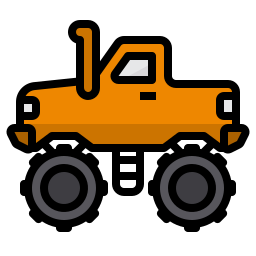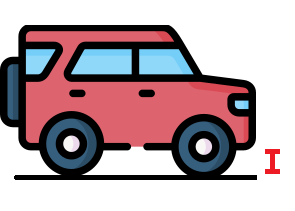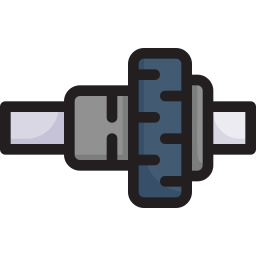Off-roading makes a great way to disconnect from the monotony and enjoy the wilderness. It ranges from a mild experience—traversing a national park for instance—to pro-level, intense activities such as dune bashing or rock crawling.
Regardless of the off-roading type you choose, you’d be driving over unpatched surfaces with obstacles like sand, mud, rocks, riverbeds, etc. Because of this, you could run into several complications—from getting stuck in a mudhole to damaging your undercarriage to losing traction control.
Fortunately, you can deal with these challenges by selecting the right off-road vehicle. Offering the best of power, stability, and protection, offroaders are specially designed to navigate through difficult terrains with ease.
Read on to find out what 5 features you should be looking for in an off-road vehicle.
1. Four-Wheel Drive (4WD)

If you are an offroad freak who loves to punch through gruesome terrains, never settle for a two-wheel drive. This means, you have two options: four-wheel drive or all-wheel drive (AWD).
Both AWD and 4×4 vehicles are designed to engage all 4 wheels of the drive train. This gives you extra torque and high traction in conditions like rainfall, ice, and snowfall.
That said, AWDs are designed for flat roads. If you’re looking to take on challenging trails, go for 4×4 trucks or SUVs.
For starters, 4×4 vehicles have higher and lower gear sets to help you power through mud puddles or shallow streams. The best part? Most 4WDs pack heavy-duty suspensions and other modifications for extra power and control.
2. Good Output Torque

Engine torque is the rotating force produced by the engine’s crankshaft. In other words, it tells what maximum work an engine can produce.
Now, if your vehicle is stuck in a mudhole or going uphill, a big output torque would be required. Here are other situations that might need extra torque:
- Soft Sand
- Steep Terrain
- Big Rock Steps
For these reasons, make sure to factor in the torque number while weighing your options. Most high-end off-road vehicles feature powerful torque to deal with tricky terrains.
3. High Ground Clearance

Ground clearance is the distance between the ground and a vehicle’s lower end.
When you’re driving over rocky terrain, you’d want to have a high ground clearance in your off-roader. This would minimize the risk of having the underbelly scraped against the surface and bearing damage.
High ground clearance serves another useful purpose.
off-roaders that are well above the ground offer a higher seating position. This way, you get better visibility, which helps you spot and prepare for incoming obstacles ahead of time.
4. A Locking Differential

Every car comes with a mechanical device called a differential.
What it does is that it distributes power unevenly to the left and right wheels, which then rotate at different RPMs. This is necessary considering the inner wheel needs to cover a lesser distance than the outer while making a turn.
Having said that, it becomes a whole different situation on uneven terrains.
Consider this situation: you end up having your one wheel stuck on a low traction surface, with power distribution favoring the same wheel. In this case, your wheel would likely keep spinning while your vehicle remains motionless.
A locking differential locks the axles together to ensure both wheels rotate at the same speed. As a result, you could use the wheel on the high traction end to work your way through the hurdle.
5. Low Range Gear

Not all but most 4WDs come with a low-range gear selection. You can find it on the transfer case knob or push button, usually denoted by 4L (four low).
low-range gear selection plays a couple of roles—1) extra torque, and 2) controlled speed.
While we’ve already discussed why more torque is preferable in off-roading, here are some situations that might need controlled speed:
- Uphill
- Rocky terrain
- Rough terrain
- River crossings
- Bumpy sand dunes
Besides that, if you’re using clutch too much, you could switch to low range and free yourself of it. Lastly, 4L comes in handy while driving downhill, not just uphill. Since it relies on engine compression, there are no chances of brake failure out of the heat as with conventional braking.
Final Word
Planning on to buy an offroader soon? you now know what 5 features you can’t be compromising on.
Having said that, the list is by no means exhaustive. Once you have your ride, you might want to bolster it by adding all-terrain tires, stronger shock absorbers, lift kits, and so on.
As much as off-roading is an adventure-packed activity, it can easily turn into a nightmare with the wrong vehicle. You wouldn’t want to skimp on important features just to save a few dollars, would you?


